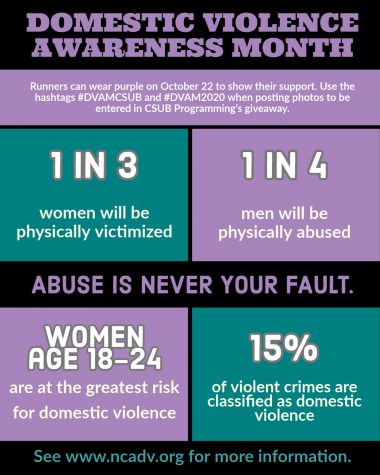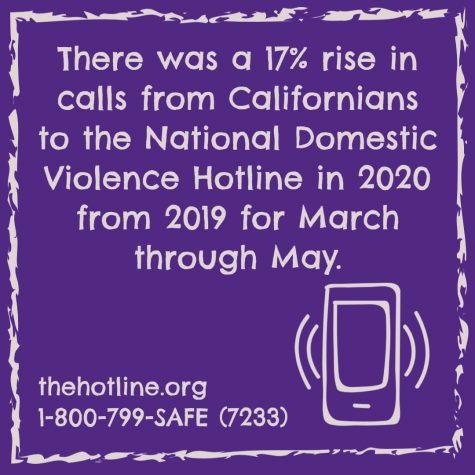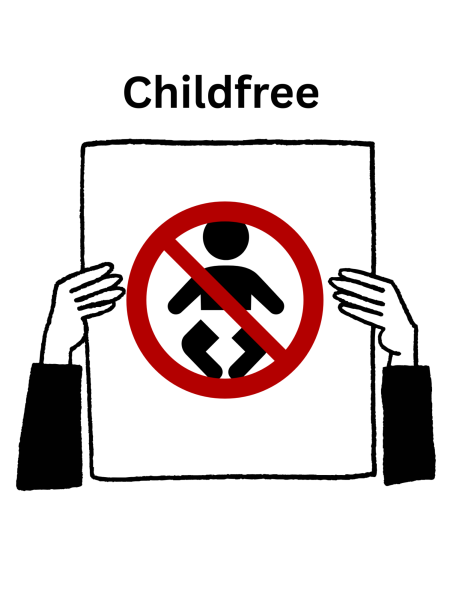Surviving in silence: Domestic violence victims spend the pandemic with their abuser
October 5, 2020
Stay-at-home orders and social distancing guidelines have become the new reality as the COVID-19 pandemic swept across the country, forcing the creation of restrictions mandating the closure of non-essential businesses, schools, and colleges to help “slow the spread.”
These restrictions have increased the amount of time that families are spending together in their homes.
Domestic violence advocates urge everyone to remember that home is not always a safe space, and essentially being forced to spend additional time at home may be dangerous for some.
“For adults and children living in situations of domestic and familial violence, home is often the space where physical, psychological and sexual abuse occurs,” Caroline Bradbury-Jones, researcher and domestic violence advocate, wrote in an article for Johns Hopkins Medicine. Although these

precautions were put in place to help protect the public’s health, these restrictions may be detrimental for people who suffer from domestic violence. These new restrictions may reduce the resources available to victims of domestic violence.
What is domestic violence and who does it effect?
The National Institute of Corrections, website, defines domestic violence as intentional intimidation including physical assault, battery, sexual assault, and/or other abusive behavior as a part of a structured pattern of power and control. This specifically refers to abusive behavior that is perpetrated by one intimate partner against another.
Domestic violence can include physical, sexual or psychological violence, and emotional abuse. The regularity and severity of abuse can vary depending on the household. However, the one persistent component of domestic violence is one partner’s constant efforts to maintain power and control over the other. Domestic violence can affect anyone regardless of age, socio-economic status, sexual orientation, gender, race, religion, or nationality.
The Sunshine Behavioral Health website indicates that 1 in 3 women and 1 in 4 men have experienced physical violence at the hands of a partner. Their data shows that women between the ages of 18-24 suffer most frequently from domestic violence.
While the risks associated with leaving an abuser are different in every case of domestic violence, it ultimately deters many from leaving their abuser. Victims often times don’t want the relationship to end, they just want the abuse to stop.
The Office for the Prevention of Domestic Violence’s website explains that many victims of abuse are often reluctant to leave because of threat of physical violence and/or psychological harm, the chance that they could be putting their children in danger, fear that they will be scrutinized by family and friends, as well as concerns of losing financial stability.
Has the pandemic affected the frequency of domestic violence?
Jackie Campbell from John Hopkins Medicine, discussed how families may be feeling crowded, frustrated and unable to escape one another due to current social distancing guidelines forcing people to remain at home more often.

Being isolated from friends and extended family, while also lacking the ability to enjoy many activities as they would before the pandemic, continues to add to that frustration.
Campbell writes that financial stress is a big contributor, as many temporary and semi- permanent closures of thousands of non-essential businesses have led to the loss of jobs for many individuals.
“With all this happening, some families are likely to encounter more arguing. It’s not clear if domestic violence would start for the first time under these circumstances. Someone who is normally nonviolent isn’t likely to suddenly start acting that way. But, if a person has been abusive in the past, they might become more violent because of the added stressors,” Campbell wrote.
According to the Public Policy Institute of California (PPIC) data, there was an approximately 17% rise in Californians who called the National Domestic Violence Hotline from March through May, which was relatively lower the same time last year in 2019.
However, the PPIC website reports data from police reports; their access is limited and does not capture all victimizations. This can make understanding the current rates of domestic violence difficult, since many who experience domestic violence may not feel safe calling the police. These individuals are not necessarily entirely invisible though, as some will reach out to call shelters and resource centers for help.
What does Campbell suggest victims of domestic violence do to protect themselves?
- Ensure they have a safe place in the home that they can retreat to; they should try to avoid bathrooms and the kitchen.
- Procure support from a well trusted friend or relative they can call.
- Come up with a safe word or phrase that will tell informed loved ones that they need help.
- Memorize phone numbers of friends, relatives and agencies that they might need to contact in case of an emergency.
- Make sure they can easily access the following: cash, identification cards (ID or Social Security Number), birth and/or marriage certificates, health insurance information, credit and/or debit cards, safe deposit keys, bank information, and any other important documentation if necessary.
What extra steps can victims of abuse take to protect themselves during the pandemic?
According to the Urban Resource Institute of NYC’s website, victims of domestic violence can try to protect themselves by doing the following:
- Avoid any known triggers of abusive behavior, including social media usage, alcohol or any that may be specific to the relationship.
- Schedule phone calls or video chats with friends and family to create a normalized and frequent outlet of external communication. \
- Take all precautions recommended by health experts to decrease the chances of getting COVID-19. Being sick can increase stress, and limit mobility, if it is necessary to leave.
- Encourage all members in the household to participate in relaxing activities to decrease stress. Such activities can include meditation, reading, exercise, and listening to music.
There is no correct way to handle domestic violence, so it is best that victims of abuse evaluate what strategies are safest for them. The most important thing they can do is remain calm and remember that the abuse is never their fault.
If you or someone you know is suffering from domestic violence, contact the National Domestic Violence Hotline at 1-800-799-SAFE (7233) or TTY 1-800-787-3224. They will provide you with judgement-free information, and resources.







